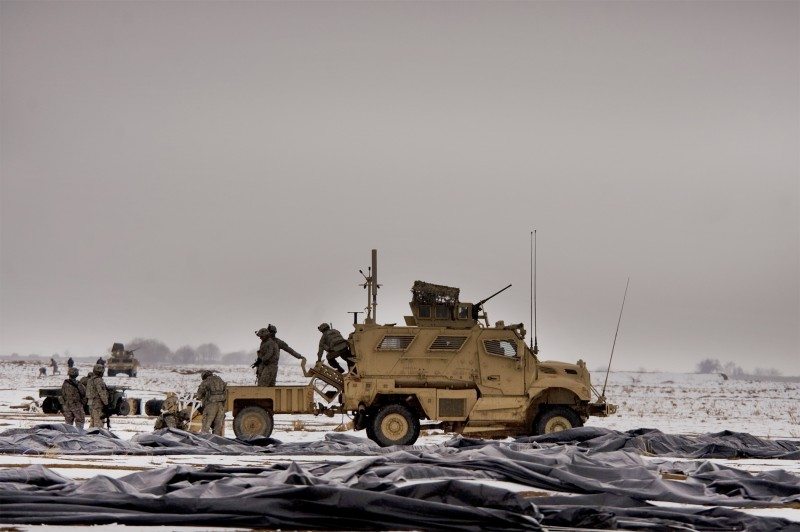For service members assigned to small military outposts strategically placed throughout Afghanistan’s most rugged landscape, air mobility is the key to mission success.
“We have outposts all over the place here,” said Army Lt. Col. David Preston, a member of a support battalion for Task Force Currahee. “Our guys are bedded down in some of the most hostile places here. We can’t get trucks in or out without serious risk. Air drops are the only way they can make it out here.”
Fuel, water, ammunition and food are vital supplies for the service members located at these forward-operating bases, combat outposts and checkpoints, which are integral in the fight against terrorist threats.
“These guys are on the frontlines of the fight,” said Lt. Col. Stacy Maxey, a Combined Joint Task Force 101 Headquarters air mobility liaison officer. “Our job is to ensure that the guys in the air and the ground guys can talk to each other so FOBs like these get the stuff they need.”
When airdrops can’t deliver supplies necessary for these military outposts to sustain themselves, it can quickly become a mission failure and jeopardize the welfare and safety of those on the post.
“When fuel gets low, it’s not about just having to live without a hot meal, a warm shower or having no light during hours of darkness,” said Bill Fishburne, a representative of FLUOR Corporation, a company that provides monthly health and safety inspections. “It’s about survival.”
To ensure that the service members who populate these military outposts are well-supplied and mission-ready, an entire network is in place to ensure the airdrops continue.
“Places like Sharana and Bagram (Air Base, Afghanistan), will never be in jeopardy of (not) having enough food or fuel,” Colonel Preston said. “My focus is the outer-lying COPs because they can very easily be in jeopardy if we don’t make airdrops happen for them.”
The requests for supplies are routed through the sustainment brigade. The request is then pushed to larger locations in theater to gather and bundle them up. The next step is aerial coordination on heavy aircraft such as the C-17 Globemaster III or the C-130 Hercules.
“My job is to give ground command perspective on what capabilities are needed for certain requirements,” said Capt. John Gruenke, a CJTF 101 Headquarters air mobility liaison officer. “They know exactly what they want and it’s my job to explain how they can get it into these locations and how to successfully submit the requests up to the Air Force.”
“(Helicopter) drops can only bring in 500 gallons of fuel at a time,” Colonel Preston said. “For an FOB that goes through almost triple that in a day, it’s not cost-effective to consider that a viable option to resupply these guys. These CDS (container delivery system) drops are what it takes for us to literally survive out here.”
The current goal is to get enough supply on-hand so that if weather or other factors that will cause the delay of an aerial delivery arise, the situation on the military outposts doesn’t immediately become an emergency.
“I want to fill up their tanks and have extra drums of fuel in storage,” Colonel Preston said. “The things that can be stockpiled should be (stockpiled). It’s not about comfort; it’s about sustainability and being prepared for anything.”
In these remote locations where the military outposts have been staged, service members often work closely with members of the Afghan National Army, the Afghan Uniform Police and the Afghan Border Police.
Fostering good relations between them often means more than just advising them on proper procedure, Colonel Preston said. Many times it’s about helping them out in their time of need, too.
“On occasion, our supplies help out the ANA, AUP and ABP,” Colonel Preston said. “These places usually don’t have extra to spare but we’re all making do with limited supplies and we’re all in this together. So if we can, we help out.”
“These Americans are (very) generous,” an ABP policeman said. “It is good to fight with them.”
As long as the roadways remain in poor condition and traveling on land continues to pose a threat to service members, aerial resupply remains the safest and most-effective means of getting support out to these military outposts, officials said.
“With airdrops, it’s an immediate turnaround,” said Army Col. Sean Jenkins, the 4th Brigade commander. “It’s a necessity to keep them supplied. Airdrops make that possible.”











